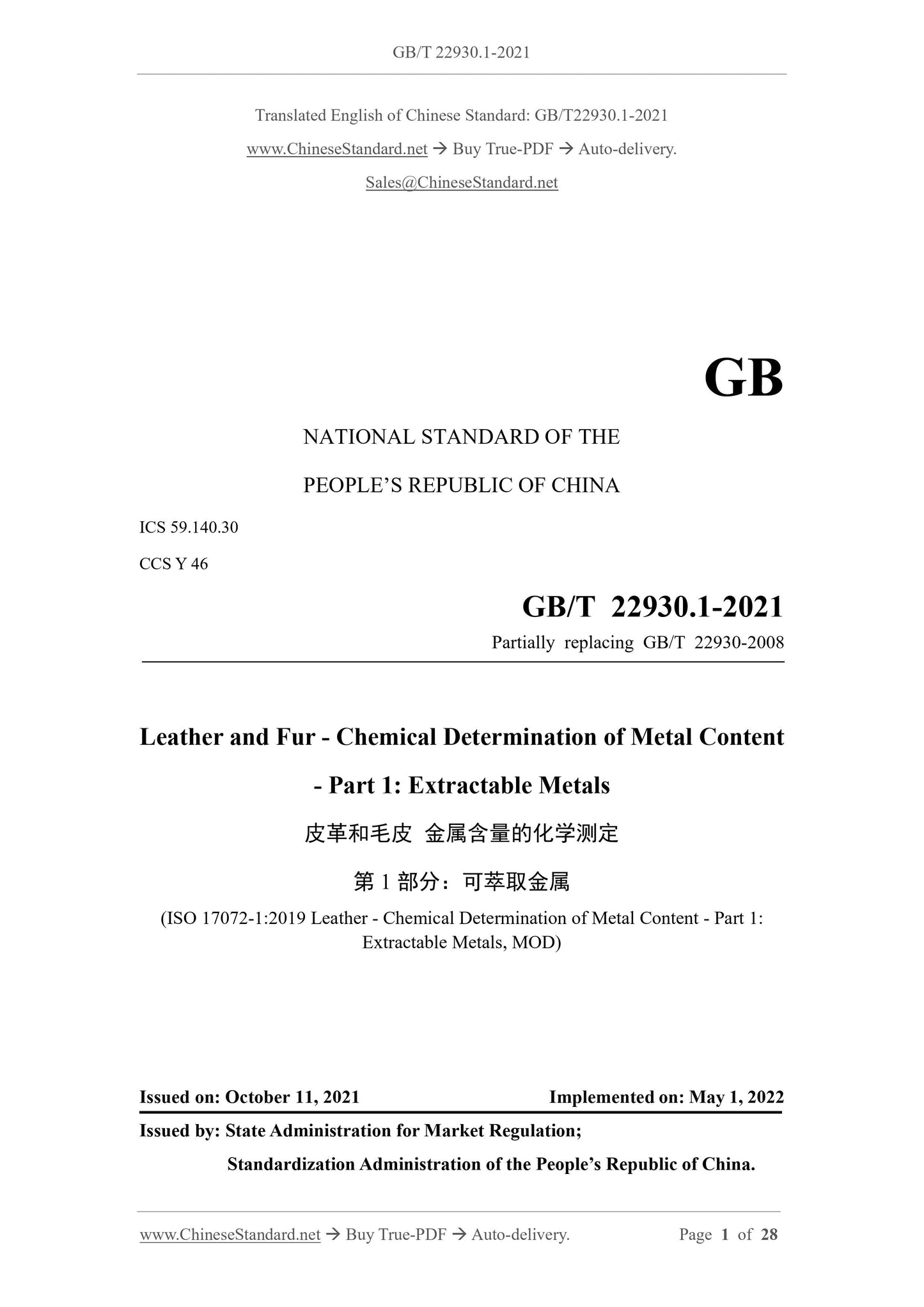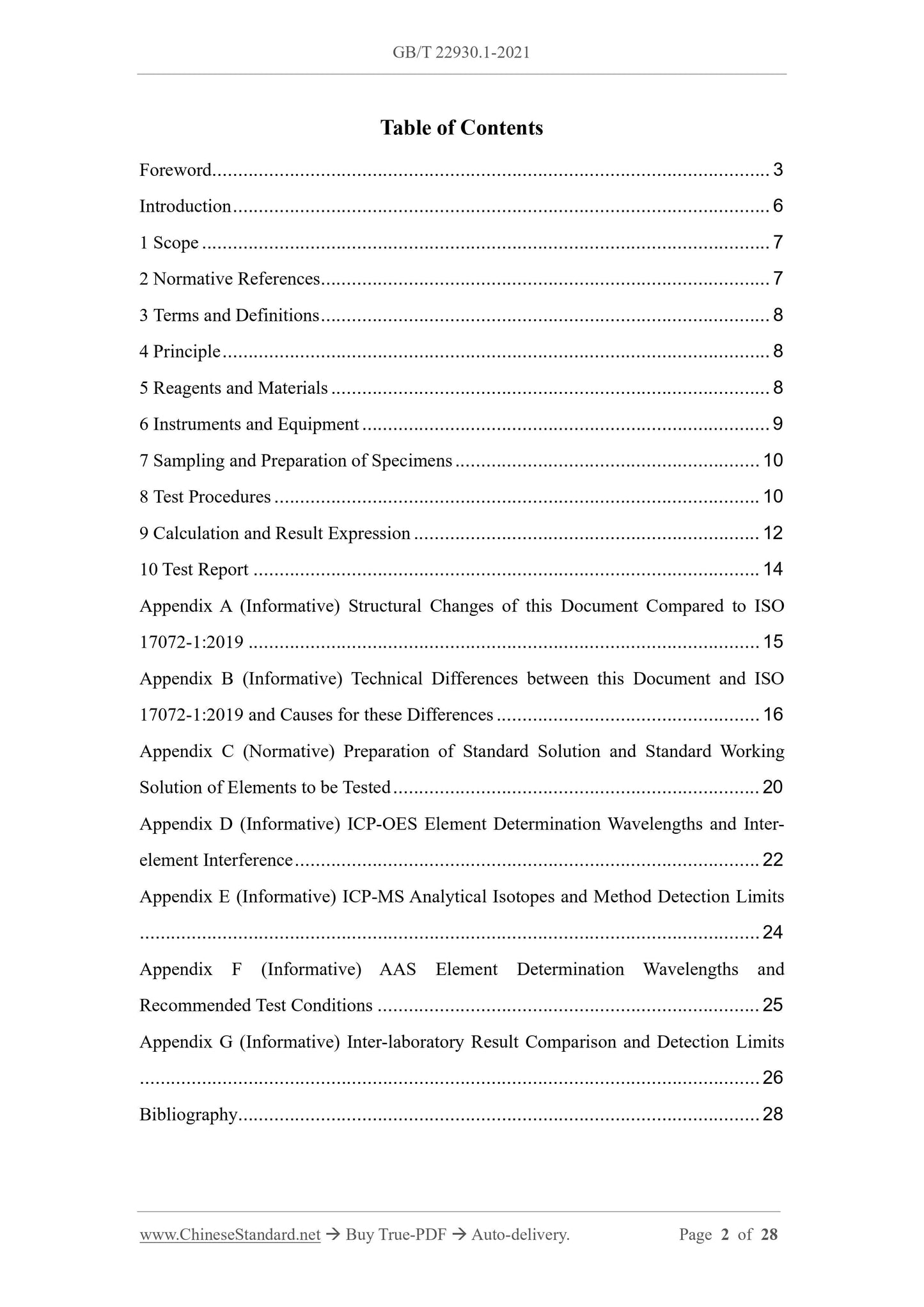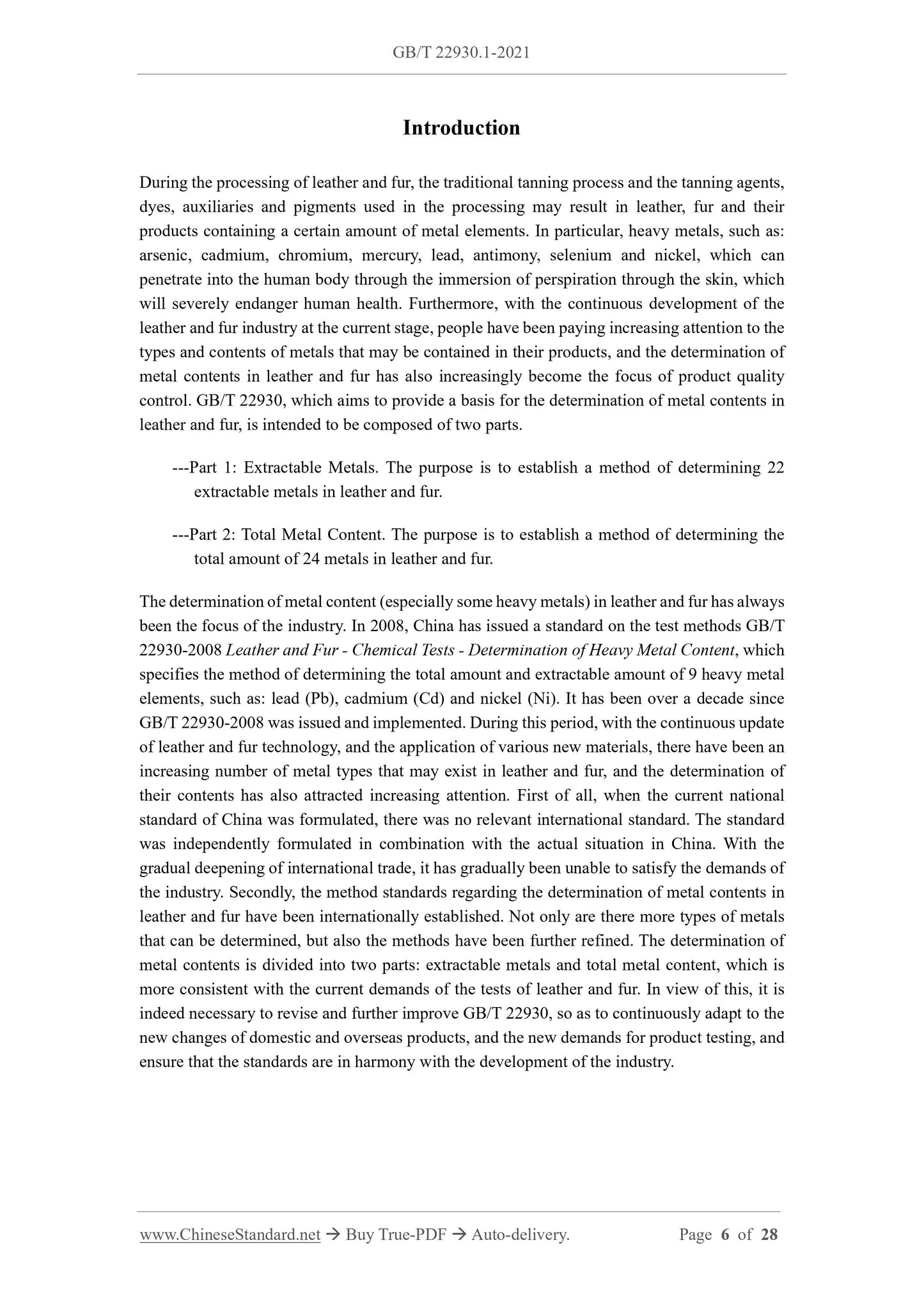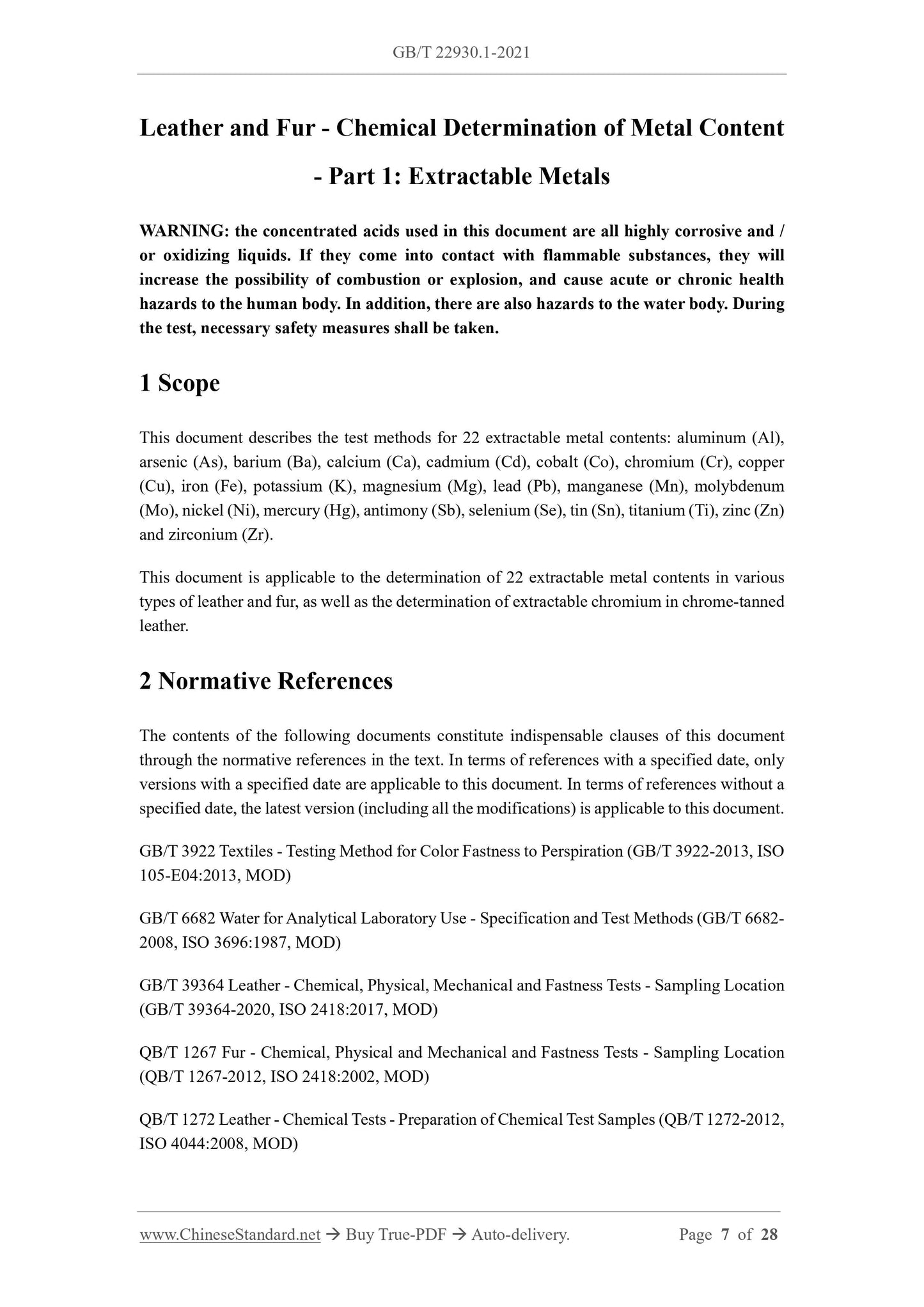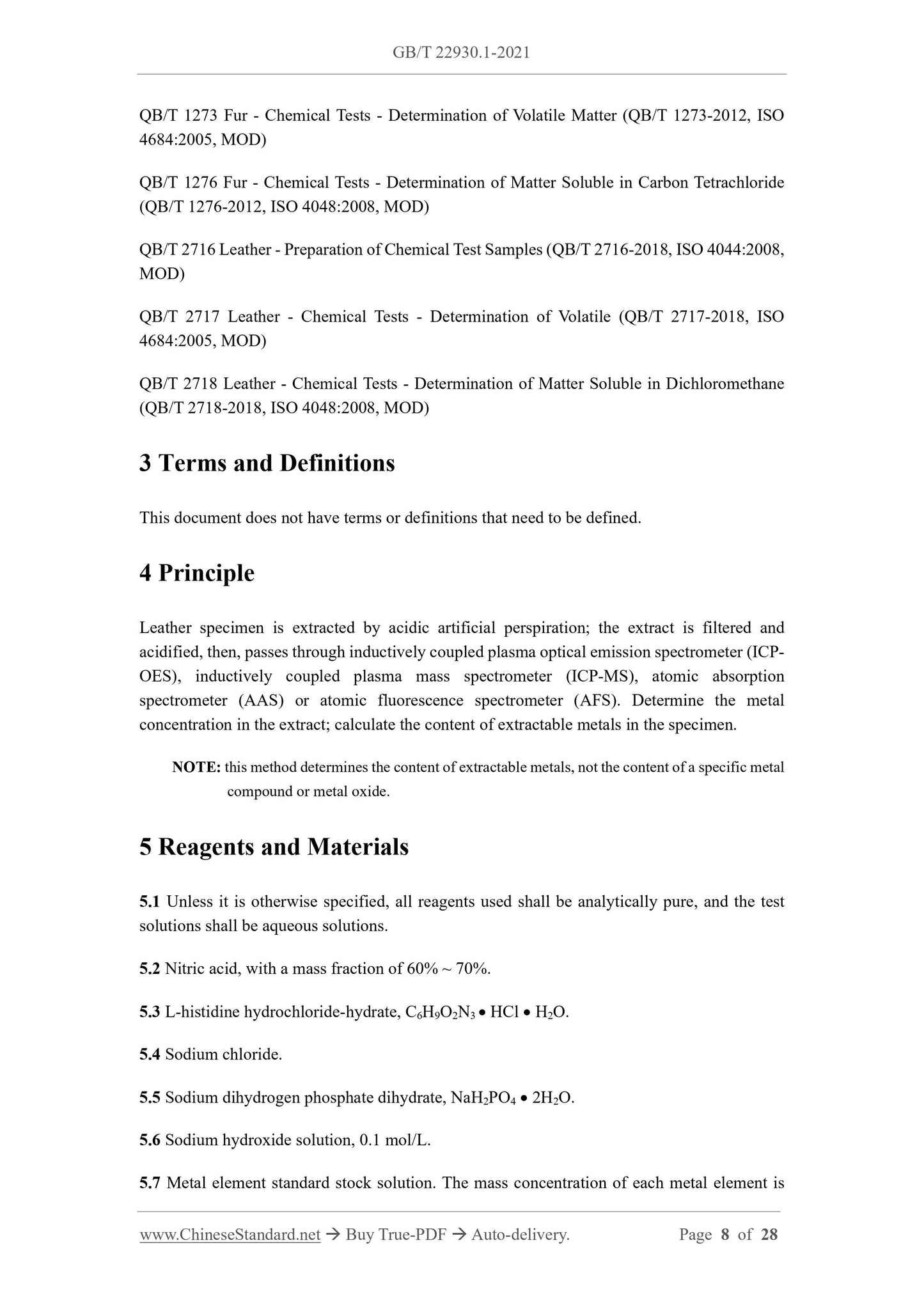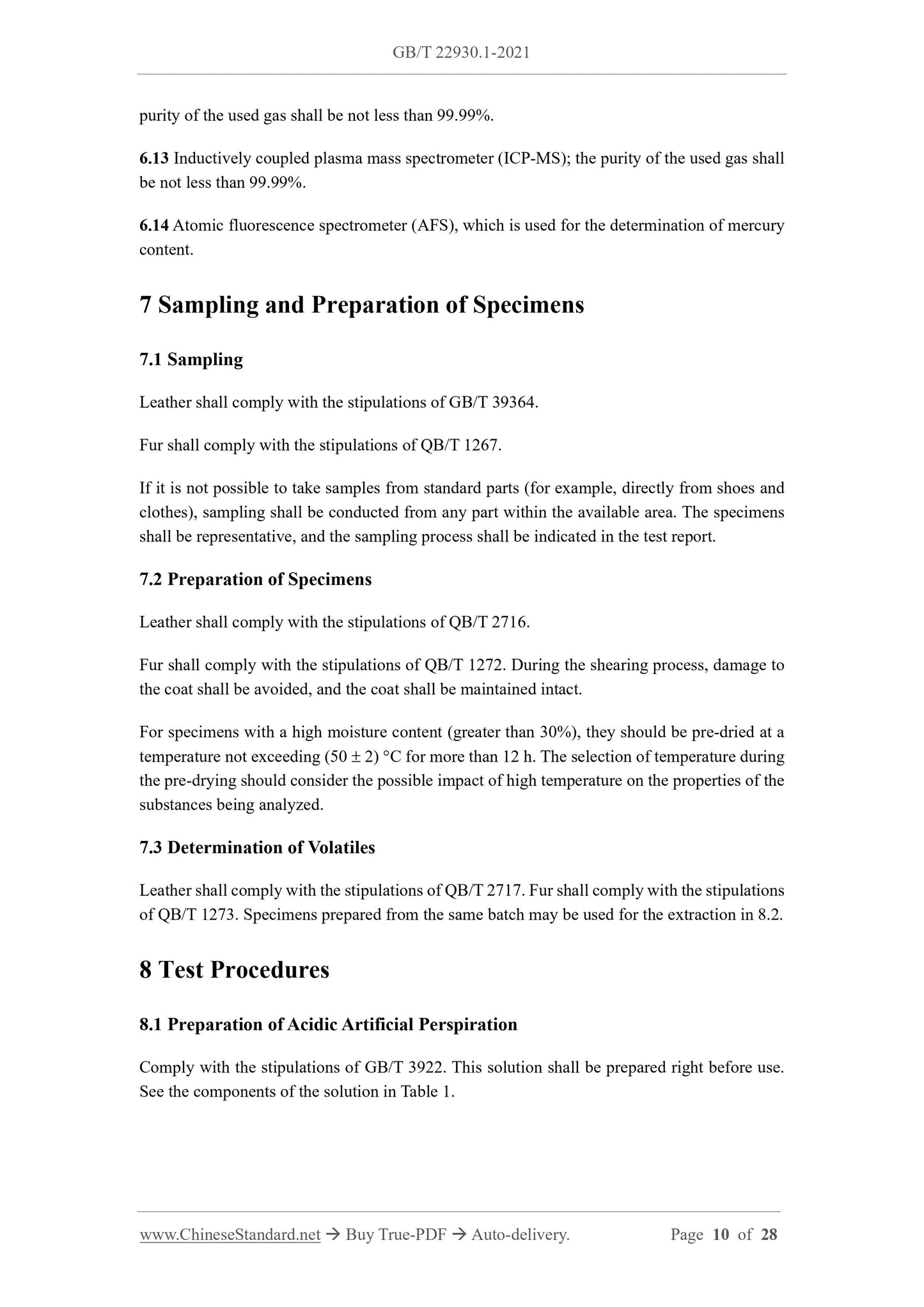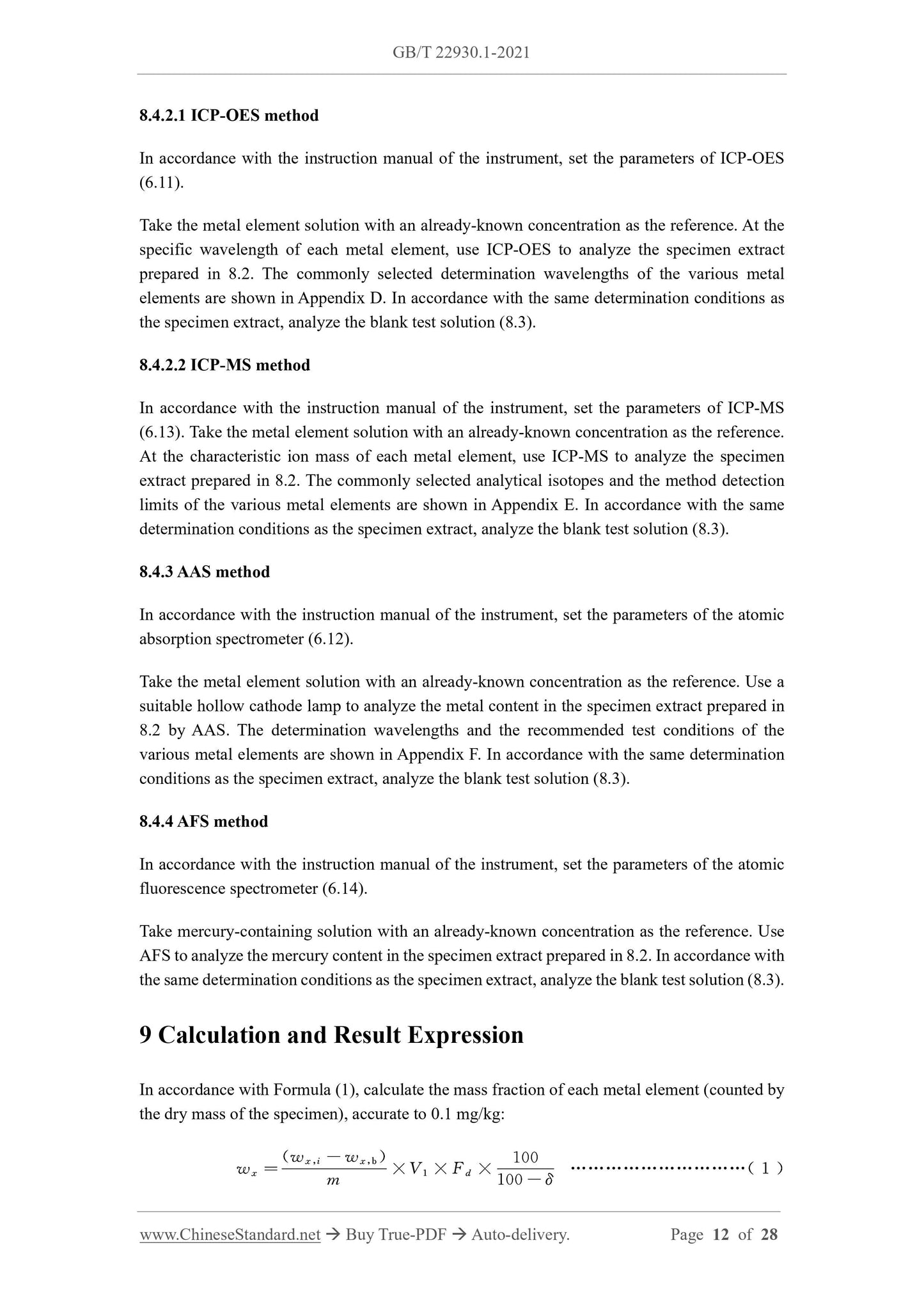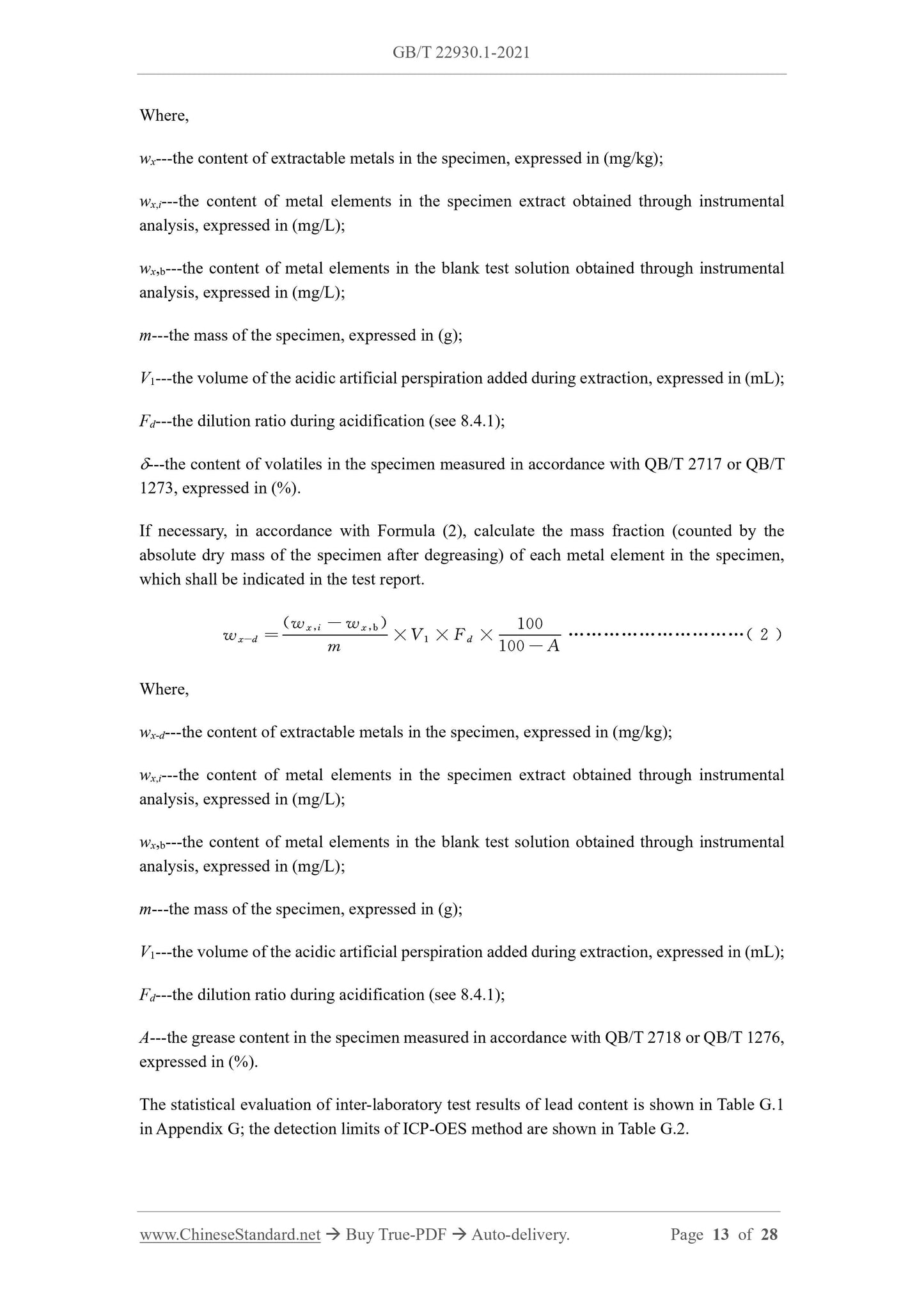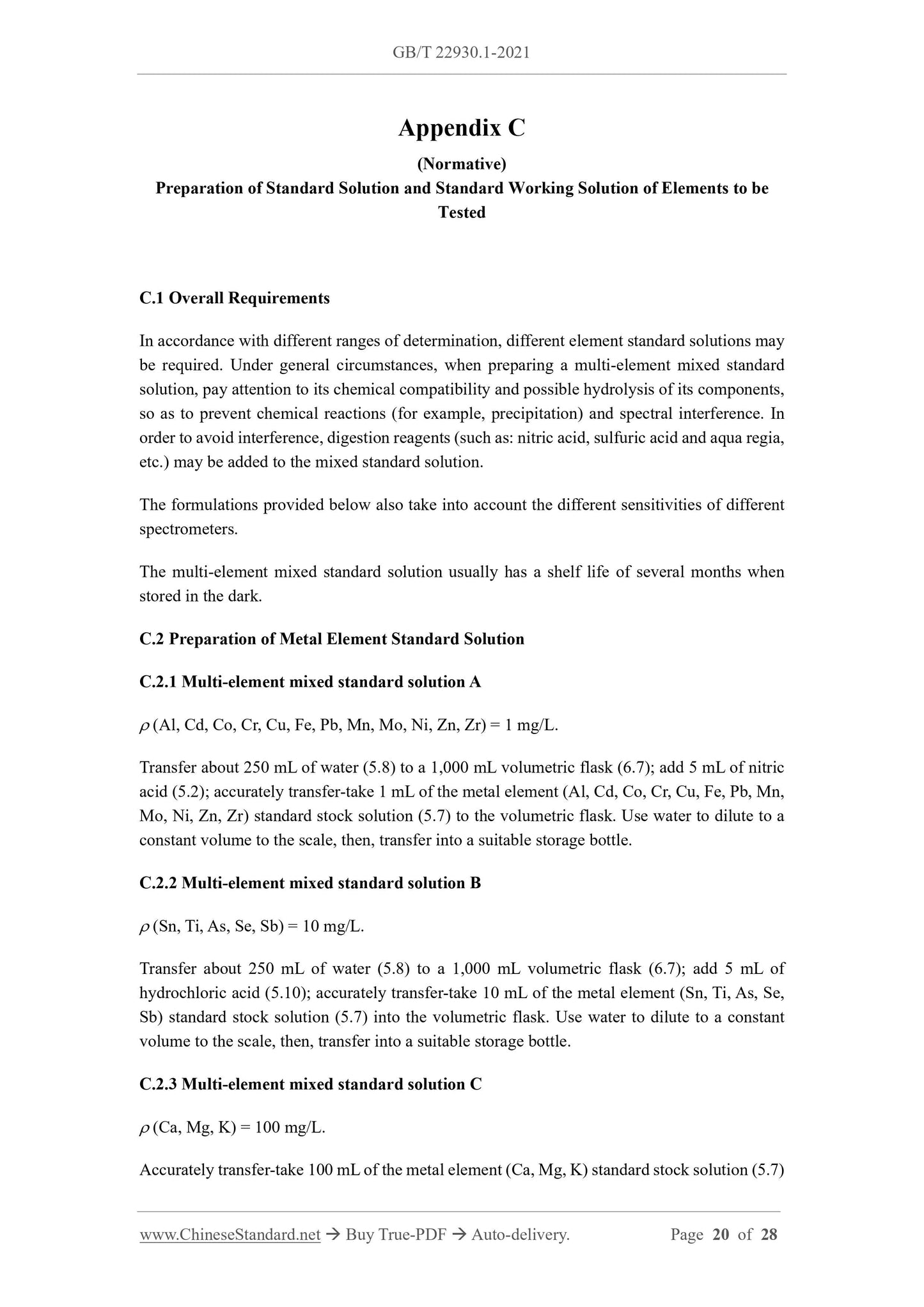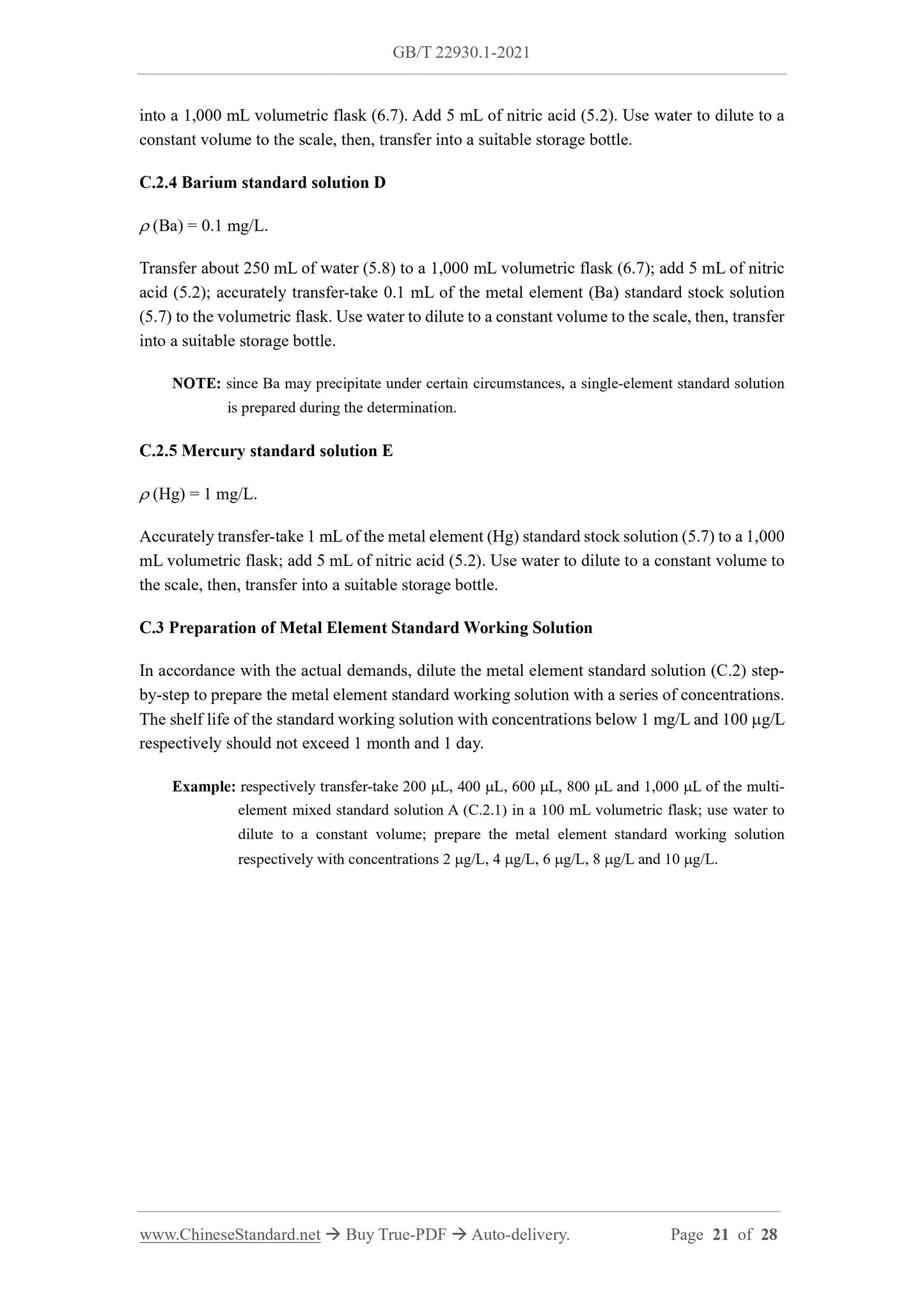1
/
of
10
www.ChineseStandard.us -- Field Test Asia Pte. Ltd.
GB/T 22930.1-2021 English PDF (GB/T22930.1-2021)
GB/T 22930.1-2021 English PDF (GB/T22930.1-2021)
Regular price
$320.00
Regular price
Sale price
$320.00
Unit price
/
per
Shipping calculated at checkout.
Couldn't load pickup availability
GB/T 22930.1-2021: Leather and fur - Chemical determination of metal content - Part 1:EXtractable metals
Delivery: 9 seconds. Download (and Email) true-PDF + Invoice.Get Quotation: Click GB/T 22930.1-2021 (Self-service in 1-minute)
Newer / historical versions: GB/T 22930.1-2021
Preview True-PDF
Scope
This document describes the test methods for 22 extractable metal contents: aluminum (Al),arsenic (As), barium (Ba), calcium (Ca), cadmium (Cd), cobalt (Co), chromium (Cr), copper
(Cu), iron (Fe), potassium (K), magnesium (Mg), lead (Pb), manganese (Mn), molybdenum
(Mo), nickel (Ni), mercury (Hg), antimony (Sb), selenium (Se), tin (Sn), titanium (Ti), zinc (Zn)
and zirconium (Zr).
This document is applicable to the determination of 22 extractable metal contents in various
types of leather and fur, as well as the determination of extractable chromium in chrome-tanned
leather.
Basic Data
| Standard ID | GB/T 22930.1-2021 (GB/T22930.1-2021) |
| Description (Translated English) | Leather and fur - Chemical determination of metal content - Part 1:EXtractable metals |
| Sector / Industry | National Standard (Recommended) |
| Classification of Chinese Standard | Y46 |
| Word Count Estimation | 21,260 |
| Issuing agency(ies) | State Administration for Market Regulation, China National Standardization Administration |
Share
